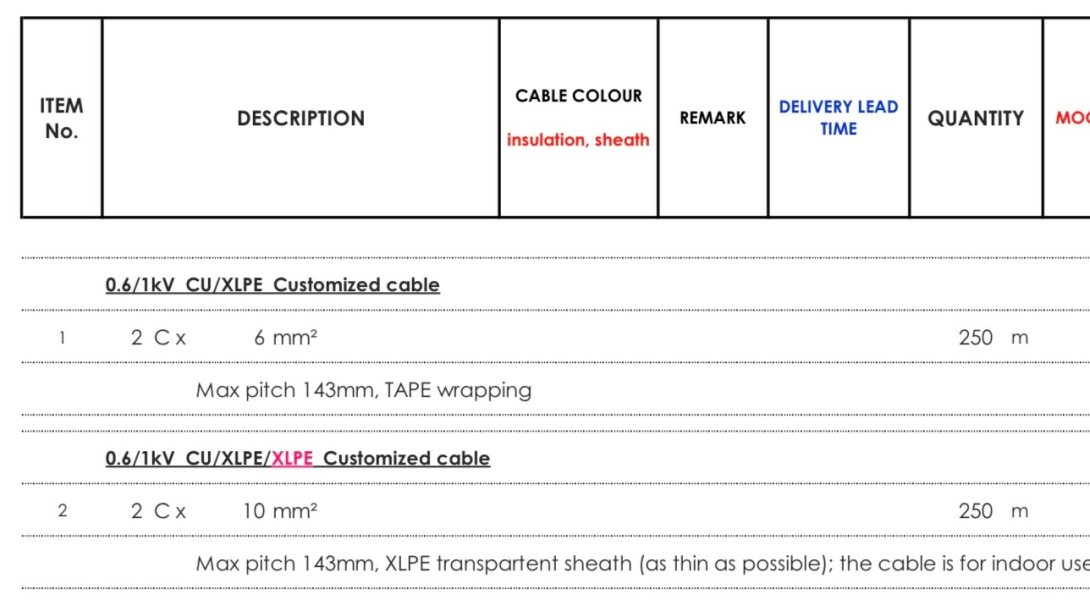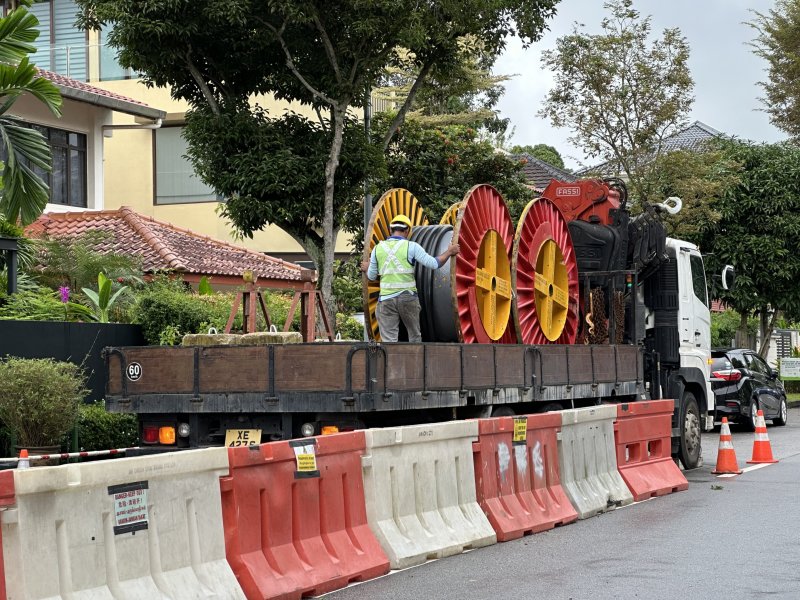Good news on the sourcing of my in-wall AC cables!
Keystone Cable will manufacture customized AC cables for my needs, sold in 100m spools, for just a few USDs per meter, having:
1) copper conductor insulation: XLPE (superior dielectric and durability, compared to PVC)
2) multi-stranded copper conductor bundle's gauge/thickness: 6mm2 (9AWG equiv.), and 10mm2 (7AWG equiv.)
3) multi-stranded copper conductor bundle's XLPE insulation color: brown (live) and blue (neutral), dyed to color code
4) twist frequency: exceeding 7 full rotations per meter (more consistently and tightly wound than possible using human hands)
5) sheathing - none (taped) for the 6mm2, and XLPE for the 10mm2; both will prevent unravelling of twisted conductors within
6) sheathing color: milky but transparent (polarity of the conductors will be visible - brown and blue)
7) sheathing thickness: very thin, for maximum flexibility and low-friction installation
8) sheathing will not be perfectly round, but instead conform to the bumpy contours of the twisted conductors within
As the costs are so nominal, I'll likely install both gauges of AC cables through the same PVC conduit (running between the MCB box and the AC duplexes) and determine which sounds "better" later, through experimentation.
The ground conductor will likely be a single multi-stranded copper conductor bundle of 10mm2 w/ XLPE insulation, loosely pulled through the PVC conduit, cut to the same length for all eight AC duplexes distributed throughout the component "end" of the listening room and anchored in a "star" configuration at the dedicated audio MCB, to ensure that there is no impedance delta between the ground wires.

Keystone Cable will manufacture customized AC cables for my needs, sold in 100m spools, for just a few USDs per meter, having:
1) copper conductor insulation: XLPE (superior dielectric and durability, compared to PVC)
2) multi-stranded copper conductor bundle's gauge/thickness: 6mm2 (9AWG equiv.), and 10mm2 (7AWG equiv.)
3) multi-stranded copper conductor bundle's XLPE insulation color: brown (live) and blue (neutral), dyed to color code
4) twist frequency: exceeding 7 full rotations per meter (more consistently and tightly wound than possible using human hands)
5) sheathing - none (taped) for the 6mm2, and XLPE for the 10mm2; both will prevent unravelling of twisted conductors within
6) sheathing color: milky but transparent (polarity of the conductors will be visible - brown and blue)
7) sheathing thickness: very thin, for maximum flexibility and low-friction installation
8) sheathing will not be perfectly round, but instead conform to the bumpy contours of the twisted conductors within
As the costs are so nominal, I'll likely install both gauges of AC cables through the same PVC conduit (running between the MCB box and the AC duplexes) and determine which sounds "better" later, through experimentation.
The ground conductor will likely be a single multi-stranded copper conductor bundle of 10mm2 w/ XLPE insulation, loosely pulled through the PVC conduit, cut to the same length for all eight AC duplexes distributed throughout the component "end" of the listening room and anchored in a "star" configuration at the dedicated audio MCB, to ensure that there is no impedance delta between the ground wires.

Last edited:






